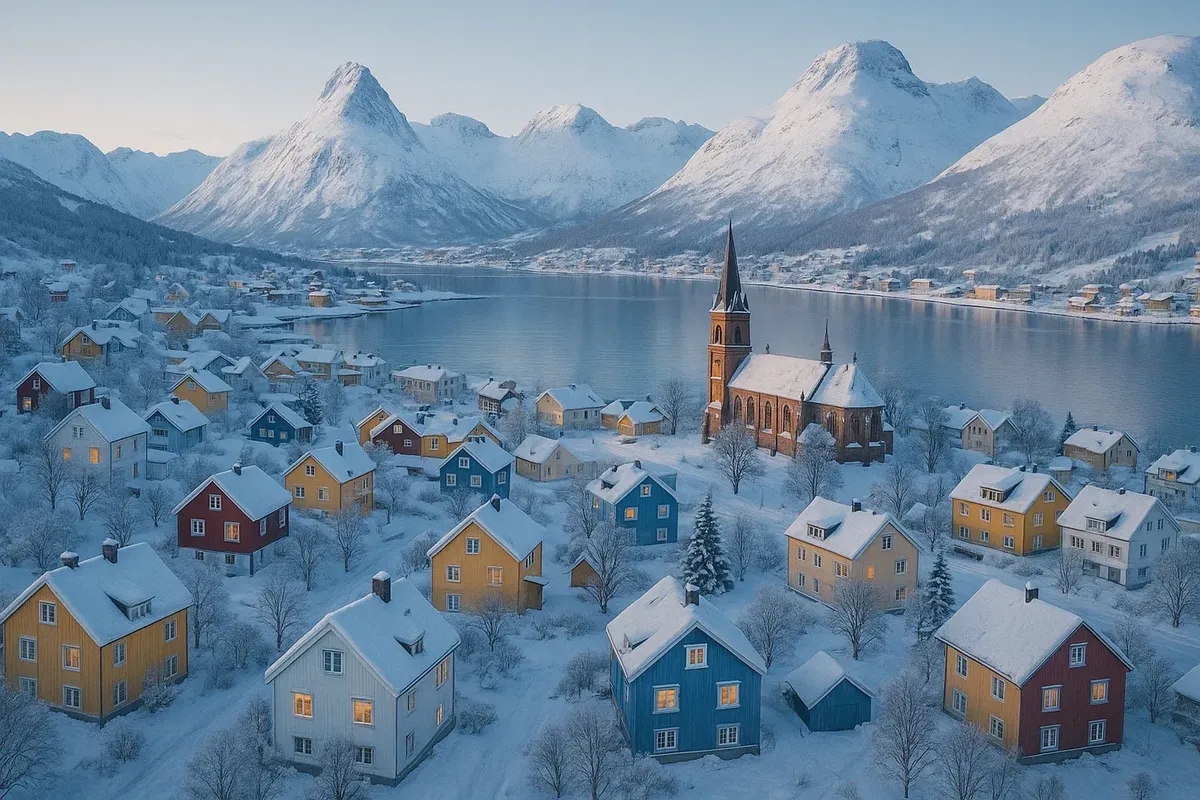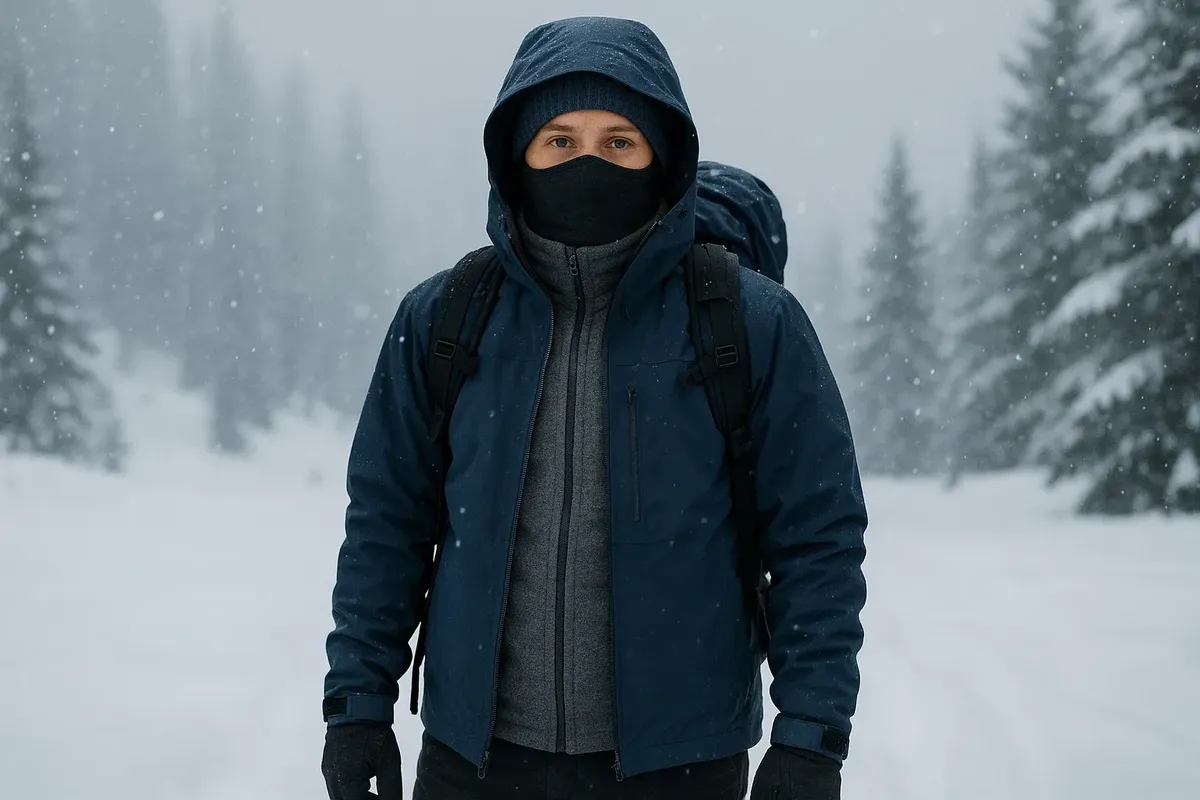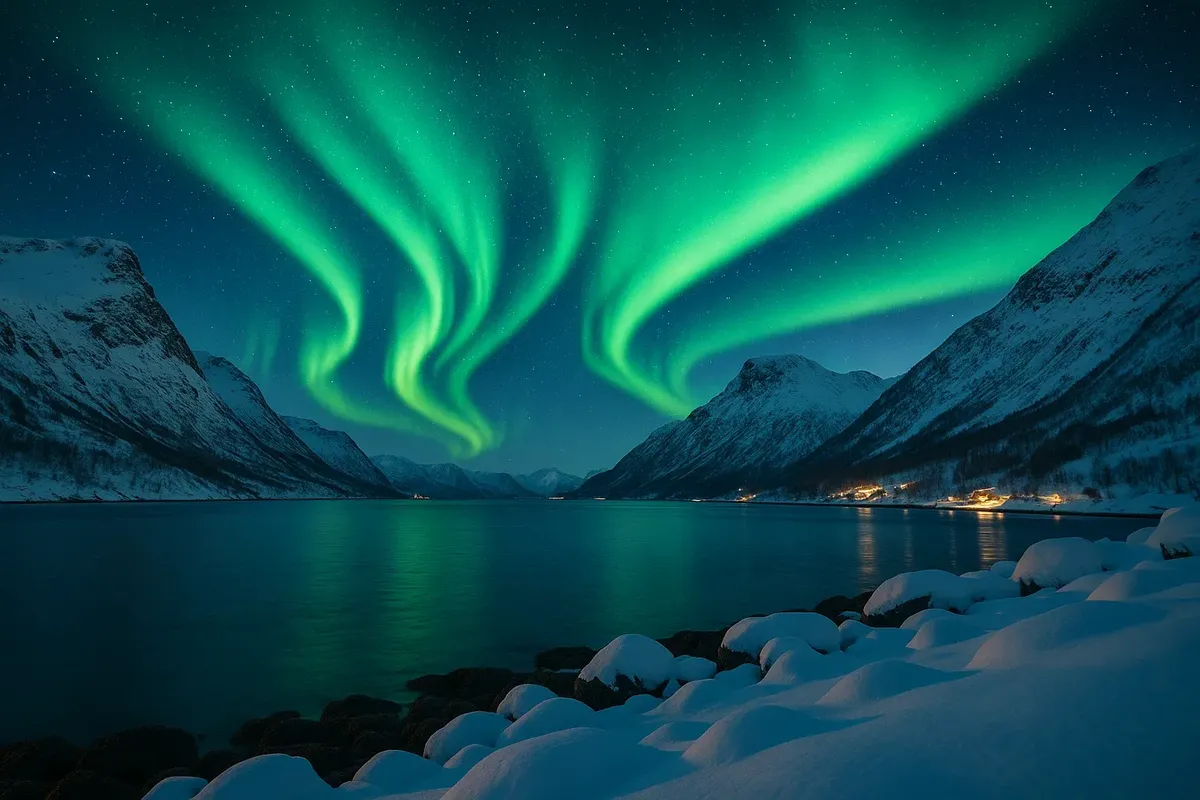❄️ What features of the Norwegian winter should tourists take into account: tips for travelling in winter 🌨️
Winter in Norway is just the best! The whole country looks like something out of a snowy fairy tale, it's so beautiful! We all know how much people love to fantasise about seeing the Northern Lights, skiing or going on a dog sledding trip, right? But, my dear, the Norwegian winter is no joke! It requires careful preparation and knowledge of its peculiarities. In this article, we'll let you in on everything you need to know about travelling in Norway in winter, including what to pack, what safety precautions to take and what activities are the best to make your trip as comfortable and memorable as possible.

What is the average temperature in Norway in winter?
Winter temperatures in Norway vary quite a lot from region to region. In the south and in lovely coastal cities like Oslo, Bergen and Stavanger, winters are relatively mild, with average temperatures ranging from a refreshing -2°C to a chilly -8°C. In the interior and in the north of the country (Tromsø, Kirkenes, Lofoten), temperatures can drop quite low, from -10°C to -25°C. In mountainous areas and in the north, it's also possible to get some really cold frosts down to -30°C. It's really important to think about where you're going and get ready for that.
How long are the days in winter in Norway?
Winter days are short in Norway, but that doesn't stop us from enjoying the season! And as you go further north, the days get shorter, but the magic of the season will be there to remind you of the beauty of the natural world. For example, in Oslo in December, the day lasts about 5–6 hours, and in Tromsø at this time, polar night sets in, when the sun does not rise above the horizon at all (approximately from late November to mid-January). The polar night creates a special atmosphere, which is just perfect for watching the northern lights. But it's important to be prepared and plan your activities in advance.
How much snow is there in Norway in winter?
I totally get it, the amount of snow in winter varies a lot depending on the region. In the beautiful, mountainous areas and central Norway, snow lies steadily throughout the winter (November–April) and can reach several metres in depth. The coastal areas of Bergen and Ålesund, for example, have mild winters with hardly any snowfall, which then melts quickly. The lovely, snowy landscapes of the northern cities and the Lofoten Islands are just perfect for a spot of winter sports, with snow falling regularly from December to March.
So, how should you dress for a winter trip to Norway?
When the weather starts to get chilly, it's super important to make sure you're dressed in layers. The three-layer rule is a great way to do this: start with a base layer (thermal underwear), add an insulating layer (like a fleece or wool jacket), and finish with an outer layer that will keep you snug and dry in the wet and windy weather. I totally understand, we all need those essentials when we're out and about, don't we? So, when the weather is bad, make sure you've got your warm, waterproof boots, thick woolly socks, gloves, a scarf and a hat. And don't forget your sunglasses, because the sun's reflection off the snow can be bright even in winter.

How to prepare for a trip to see the Northern Lights in winter?
If you're looking to see the amazing Northern Lights (or Aurora Borealis, as they're also known), then winter is the best time to come and visit! When you're planning your trip, it's always worth bearing in mind that the best time to visit is from late September to early April, especially if you're looking for a bit more of a festive feel. November, December, February and March are the months to go for, as they're when the Christmas spirit really takes hold! To make sure you're cosy and ready for whatever the day brings, be sure to dress warmly. It's always a good idea to book your excursions in advance to avoid any disappointment. Keep an eye on the aurora activity forecasts to plan your day accordingly. And don't forget to take a camera with a tripod – you'll want to capture all the magical moments. If you're looking for the best spots to spot the northern lights, Tromsø, the Lofoten Islands, Alta and Kirkenes are the places to go!

What are the most popular winter activities in Norway?
When it comes to winter activities, there's so much to choose from! From the classic downhill and cross-country skiing to the more adventurous dog sledding, snowmobiling, ice fishing, whale watching and northern lights viewing, there's something for everyone. And let's not forget the unique experience of staying in an ice hotel or igloo – what a treat! I am so excited to tell you about the amazing ski resorts of Trysil, Hemsedal and Hafjell! They are all so well equipped and suitable for tourists of all skill levels, so you can be sure you'll have an incredible time.
I know it's only natural to want to stay cosy and safe during the winter months, so I'd love to know, what safety precautions should we take?
When winter comes, it's always a good idea to check the weather forecast (use Yr.no) and plan ahead. If you're thinking of heading out into the mountains, it's always best to go with someone else, and don't forget to take a spare battery for your phone. A hot drink in a thermos and some food and warm clothing are also great ideas. It's always a good idea to let someone know your routes and plans, just to be safe. And when you're travelling by car, it's always a good idea to have snow chains and winter tyres.
How safe are the roads in Norway in winter?
Don't worry – the good people of Norway make sure their roads are regularly cleared in winter, but they can still be a bit slippery, especially on mountain passes and in the northern areas. It's always best to have winter tyres on your car from October to April to be safe. Please be careful when you're going round sharp bends, and don't forget to check the weather forecast and road conditions on the Vegvesen.no website.
What is special about a winter holiday in Lofoten?
Lofoten is a lovely place to visit in winter, because it's milder than other northern areas thanks to the Gulf Stream. You can usually expect temperatures of between -5 and 10°C, which is perfect for exploring! The weather here is really something else! It can be really windy and rainy, and the days are pretty short. When winter comes, it's a magical time to visit. The Northern Lights dance in the night sky, and the landscape is covered in a beautiful blanket of snow. It's the perfect opportunity to get out and about and capture some amazing photos. And if you're feeling adventurous, why not try your hand at winter surfing?
How can I avoid hypothermia and frostbite in Norway in winter?
It's so important to keep your clothes and shoes dry to avoid getting hypothermia and frostbite. It's also a good idea to always have a spare set of dry clothes with you, not to stay in the cold for long periods of time without moving, to drink hot beverages regularly, to wear mittens instead of gloves, and not to take off your hat and scarf in severe cold and wind. If you feel uncomfortable or very cold, please get into a warm place straight away.
I know the Norwegian winter can be tough, but I also know it's a great time for outdoor activities and unique experiences. With the right preparation and knowledge of the climate, you can make your trip truly magical and unforgettable.





2 comments
Log in to leave a comment
Hva er den største overraskelsen turister oftest får når de kommer til Norge på vinteren? ⛄